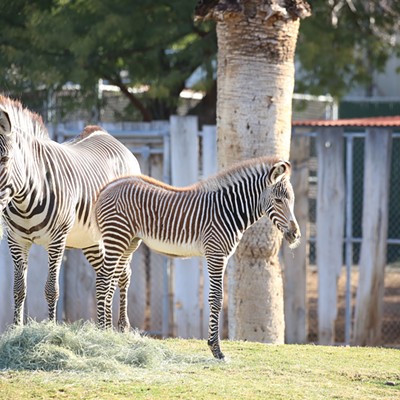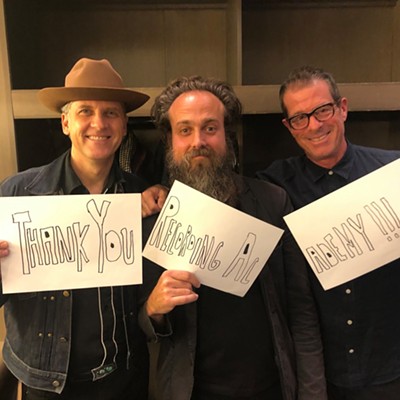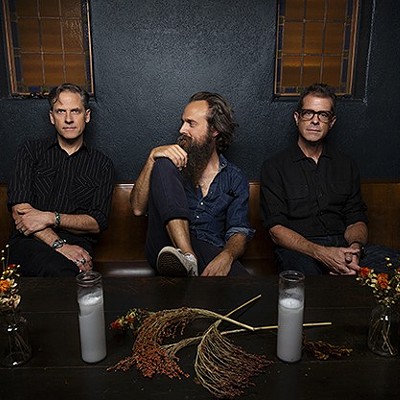2008
Jim Nintzel chronicles the end of the Phoenix Mars Lander, a robotic lab assembled and operated by the UA Lunar and Planetary Lab in partnership with NASA:
When the end finally came, Phoenix was killed off by an unforgiving dust storm that blew across the arctic plains of Mars.
The days were growing short for Phoenix, the NASA lander that had been transmitting data back to the UA Lunar and Planetary Laboratory since touching down near the Martian north pole on Memorial Day weekend. As the Martian winter set in, temperatures were dropping to minus 130 degrees Fahrenheit, and the skies were growing darker. The sun, which had never set during the prime months of the mission, was now sinking beneath the horizon for roughly seven hours a day.
Phoenix's solar arrays were capturing less sunlight to power the batteries that ran the heaters that kept electronic components warm in the frigid cold. For the first time, Phoenix began to shut down completely, and then reboot itself after sunrise.
"We knew the end was coming," says Peter Smith, the UA professor who headed the science end of the Phoenix mission. "We called our last few weeks the 'hospice mode.' We knew it was going to go, but it's kind of slow and painful."
—"Farewell to Phoenix," Nov. 27
2009
Gene Armstrong profiles Calexico as the band enters the TAMMIES Hall of Fame:
It was about 13 years ago when Joey Burns and John Convertino, then the rhythm section for influential local act Giant Sand, put together a quiet little album of home recordings under the name Spoke. That self-titled album was released by a small German label.
Soon, though, the group changed its name to Calexico—and a remarkable pillar of Tucson music came into being.
Let's have Burns tell the story: "We only had the vinyl of that recording out at the time, and we were guests on the (New Jersey) radio station WFMU. A DJ comes into the booth and says, 'Is this your record? You're called Spoke? Well, there's this Florida pop-punk band also called that.' We found it interesting that other musicians had chosen the same name."
Burns briefly had used the name Calexico for another project.
"I just remembered the name Calexico, so we figured we'd use that," he recalls. "We just kind of changed the name on the radio that day."
Now, Calexico is a mainstay of local music, with more than a dozen recordings to its credit (for Quarterstick Records and its own label, Our Soil, Our Strength). The group is among a small number of music acts that can be considered quintessentially Tucson, and—having played many times throughout Europe, as well as in the Middle East, Japan and South America—they're an ambassador for the music of the Southwest to the rest of the world.
—"Community Connections," Sept. 10
2010
Leo W. Banks examines the aftermath of the killing of Cochise County rancher Rob Krentz:
A little more than a month has passed since the death of Cochise County rancher Rob Krentz, and the emotion generated by his murder, the pure shock of it, has ignited a bonfire that still burns across Arizona's borderlands—and all the way to Washington, D.C.
Now everyone is demanding troops. Now, with Gov. Jan Brewer's signature on a tough new illegal-immigration law, the nation is embroiled in a loud debate about racial profiling. Now everyone has a multipoint plan for bringing some control to a border so porous that anyone who wants to get into the country can eventually do so, as Cochise County Sheriff Larry Dever last week told the U.S. Senate Homeland Security and Governmental Affairs Committee.
Will anything change now?
When the bonfire cools, will we be able to look back and say, as the heartbroken Krentz family hopes, that Rob's death wasn't in vain?
—"The Krentz Bonfire," April 29
2011
It was supposed to be just another Congress on Your Corner event, a chance for constituents to chat with U.S. Rep. Gabrielle Giffords on a sunny Saturday morning.
It turned into a massacre that left Giffords critically wounded with a gunshot to the head, a half-dozen people dead, 12 others wounded, and the nation's attention focused on Tucson.
Giffords, 40, had just begun meeting with people in front of the Safeway store on the southeast corner of Ina and Oracle roads when Jared Lee Loughner allegedly crashed through the tables and opened fire on Giffords and her district director, Ron Barber, with a Glock 9-mm pistol.
"He got right in front of Gabby and Ron—no more than 4 feet away, and probably less than that—and took numerous shots at them," says Mark Kimble, a Giffords staffer who watched in horror as the gunman began his rampage. "They both immediately fell. Then he was just shooting at everyone around in all directions. He just kept firing."
By the time Loughner ran out of ammunition in his 31-bullet extended clip, he had killed six people: federal Judge John M. Roll, 63, who had reportedly just stopped by to say hello to Giffords; Christina-Taylor Green, a 9-year-old Mesa Verde Elementary School student who had recently been elected to her student council; retirees Dorwan Stoddard, 76; Dorothy Morris, 76; and Phyllis Schneck, 79; and Gabe Zimmerman, 30, a Giffords staffer who headed up constituent services.
—"A Morning Massacre," Jan. 13
2012
Jim Nintzel hits the campaign trail as Democrat Ron Barber and Republican Jesse Kelly race to complete Gabby Giffords' congressional term:
The crowd was smaller at Jesse Kelly's primary-election-night party at the Viscount Suite Hotel bar last week, but the outcome was the same as in 2010: Kelly outpaced his GOP rivals for a congressional seat and won the chance to advance to the general election.
Kelly captured 35 percent of the vote in the four-way race, while former Air Force fighter pilot Martha McSally won 25 percent; state Sen. Frank Antenori won 23 percent; and sports broadcaster Dave Sitton got 17 percent.
Kelly will face Democrat Ron Barber in the special election that was triggered when U.S. Rep. Gabrielle Giffords resigned in January in order to focus on her recovery from a gunshot wound to the head during a shooting rampage that left six dead and 13 wounded on Jan. 8, 2011.
Barber, who had served as Giffords' district director, was among those wounded in the shootings. Now, at age 66 and with Giffords' encouragement, he has decided to make his first run for office.
The race sets up one of Giffords' closest confidantes against one of her fiercest rivals. Kelly lost to Giffords by roughly 4,000 votes in 2010, giving her the closest race of her congressional career. ...
With a presidential election on the horizon, the CD 8 race has tremendous symbolic importance: If Democrats can hold a seat in GOP territory, it will help their narrative that Republicans have drifted too far to the right while in the grip of the Tea Party. If Republicans can win, they can claim that the wind remains at their back going into the fall election cycle.
—"Barber vs. Kelly," April 26
2013
Mari Herreras celebrates the All Souls Procession:
Tucson's heart exists in many places, I say to myself as I watch the activity, but on this night in particular the city's heart is Mariscal's front yard. The volunteers are adding the finishing touches to items for the Procession of Little Angels.
The procession, on Saturday, Nov. 1, is traditionally the first event of the All Souls Procession weekend, which culminates with the procession at 6 p.m. on Sunday, Nov. 3. By the end of this Friday night, the volunteers, headed by Little Angels director Jhon Sanders, will have prepped more than 400 angels' wings and sugar skulls to be decorated by children at an event that gives kiddos the opportunity to express loss in their own way. Sanders recalls that at past Little Angels events, many children have honored dead pets—sometimes the first significant loss for wee ones.
Sanders says the effort is an example of the best qualities of All Souls. It's 100 percent community driven, with volunteer directors coordinating the weekend events and many more volunteers supplying the labor. Mariscal, for instance, is a volunteer who came forward more than five years ago with the idea of making sugar skulls for the event, and handing them out during the procession.
—"All Souls, All Community," Oct. 31
















